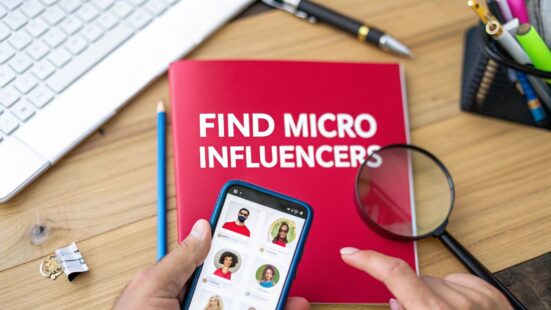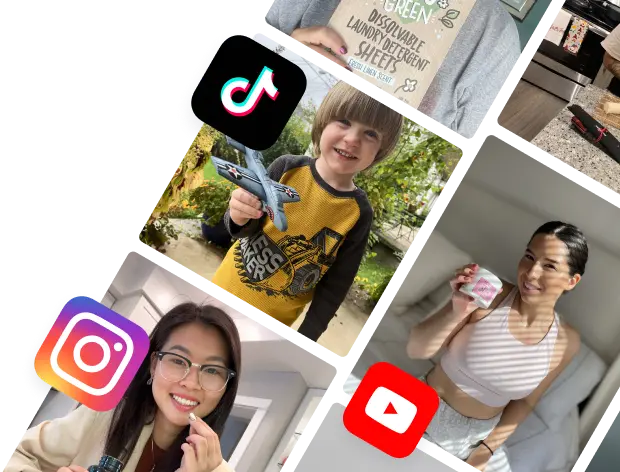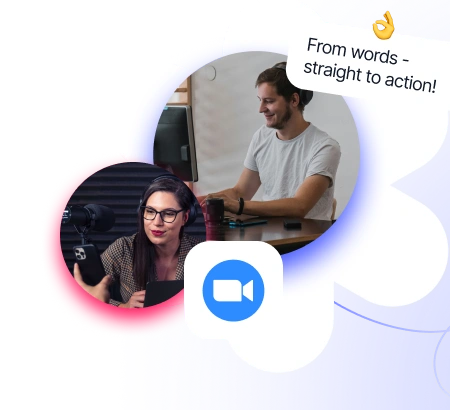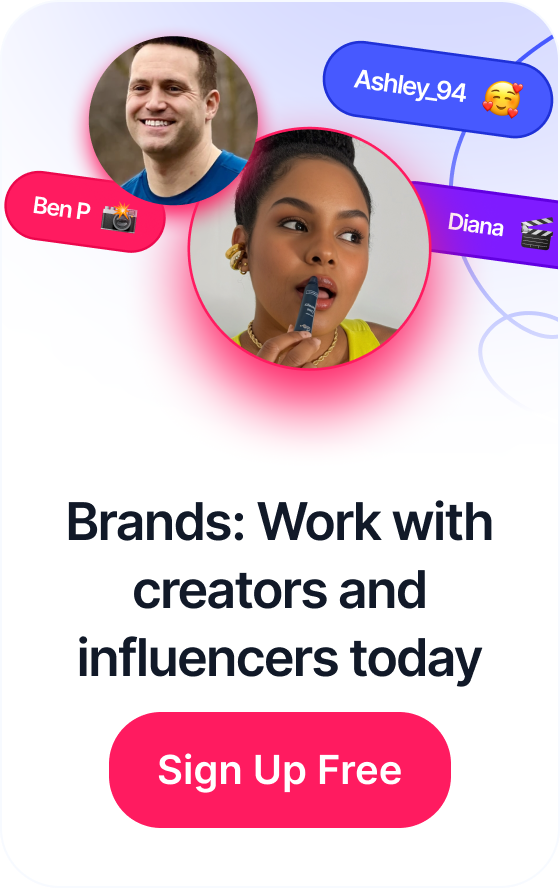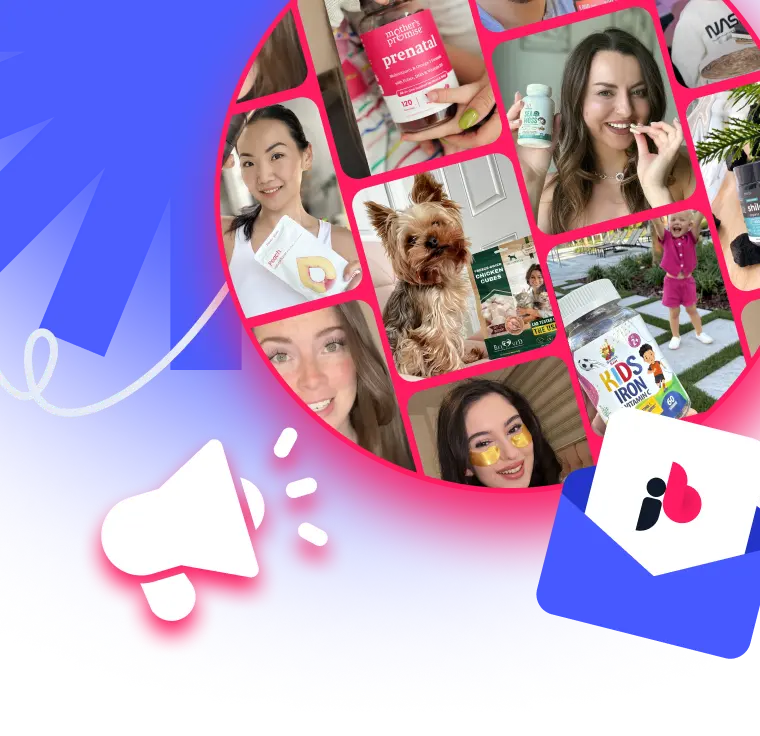 How to Make Influencer AI: Create Your Digital Persona
How to Make Influencer AI: Create Your Digital Persona
When you're looking for the right micro-influencers, it really boils down to understanding their unique value: high engagement, authentic audience connections, and cost-effectiveness. These creators pack a serious punch because they operate within tight-knit, trust-based communities. A recommendation from them feels more like advice from a friend than a paid ad.
Why Micro-Influencers Are Your Brand's Best-Kept Secret
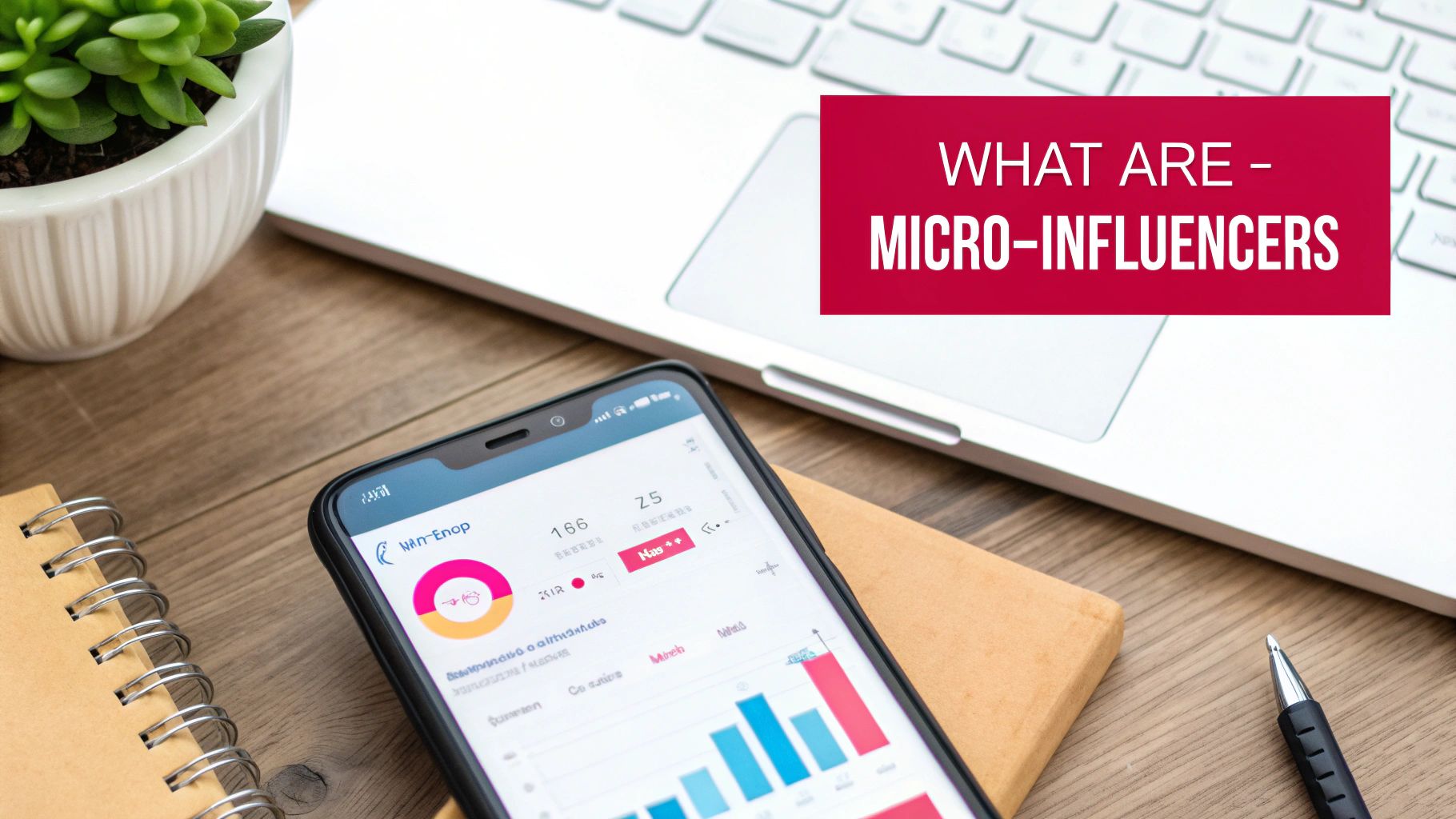
Before jumping into the search, you need to get why this specific tier of creators is so effective. The magic of micro-influencers isn't just their follower count; it’s the depth of their influence. While macro-influencers and celebrities cast a wide net, micro-influencers use a finely-tuned spear, hitting highly specific and engaged audiences.
Think of it like this: a celebrity endorsement might get seen by millions, but how many of those people are actually paying attention? A micro-influencer, on the other hand, is speaking to a smaller but deeply invested audience that hangs on their every word. Their followers trust them precisely because they don't feel like some massive, untouchable media personality.
The Power of Niche Authority
Micro-influencers are almost always experts in a very specific niche. It could be vegan skincare, sustainable fashion for petite women, or board games for families—whatever it is, they’ve built a genuine community around a shared passion.
This focused authority means their product recommendations carry serious weight. When they endorse something, it comes across as a genuine discovery shared with friends, not just another generic ad spot. That authenticity is what leads to more meaningful interactions and a much higher chance of conversion.
The real advantage of working with micro-influencers is the authentic trust they've built. Their followers see them as peers, which makes their recommendations far more persuasive than those from larger, more commercialized accounts.
Unpacking the Engagement Advantage
The data backs this up time and time again. Smaller, more focused audiences are simply more interactive. Research consistently shows that micro-influencers, especially those with follower counts between 5,000 and 20,000, often hit engagement rates averaging 3.86%. That's significantly higher than what you'll see with most macro-influencers.
If you want to dig deeper, you can explore more influencer marketing statistics to see the full picture. This superior engagement translates directly to a better return on your investment, since each follower is more likely to see, interact with, and act on the content.
Here's a quick comparison to put things in perspective:
Micro vs Macro Influencers At a Glance
| Metric | Micro-Influencers (10k-100k Followers) | Macro-Influencers (100k-1M Followers) |
|---|---|---|
| Engagement Rate | Typically 2-5% (Higher) | Often 1-2% (Lower) |
| Audience Trust | Very High (Seen as peers) | Moderate (More commercial) |
| Niche Authority | Highly Specialized | Broader, more general topics |
| Cost | Lower, more budget-friendly | Higher, can be very expensive |
| Authenticity | Feels genuine and personal | Can feel like a polished ad |
| Reach | Targeted and focused | Broad and widespread |
As you can see, the choice isn't just about reach; it's about the quality of that reach and the connection behind it.
Cost-Effectiveness and Scalability
Partnering with micro-influencers is also a surprisingly budget-friendly strategy. Because they have smaller audiences, their rates are much more accessible. This means brands can collaborate with a whole squad of creators for the same price as a single macro-influencer campaign.
This approach gives you several key benefits:
- Diverse Content: Working with multiple creators gives you a rich library of user-generated content (UGC) that you can repurpose across your own marketing channels.
- Risk Mitigation: Spreading your budget across several influencers is just smart. It reduces the risk of a single underperforming campaign tanking your ROI.
- Expanded Reach: Collaborating with five influencers who each have 20,000 followers allows you to tap into five distinct, loyal communities. You can potentially reach a more targeted total audience than with a single 100,000-follower account.
Ultimately, learning how to find micro-influencers is about shifting your focus from raw follower counts to the quality of the community. It’s a strategic move that prioritizes authentic connections and delivers measurable, high-impact results for your brand.
Table of Contents
Building Your Ideal Influencer Persona
You can't find the right partner if you don't know who you're looking for. It's a simple truth, but one that gets overlooked all the time. Before you even think about diving into hashtag searches or scrolling through platforms, you need to build a detailed influencer persona.
Think of this persona as your roadmap. It's the one thing that ensures you're searching for a creator who genuinely clicks with your brand and, more importantly, will actually resonate with your target customers.
Going into the search blind with a vague idea like "I need a fitness influencer" is a recipe for wasted time and frustration. Precision is your single greatest asset here. It’s the difference between finding just anyone and finding the right one.
So, where do you start? Look inward at your own brand and your best customers. Who are you really trying to reach? Once you have a crystal-clear picture of your target audience, you can start mapping their traits onto your ideal creator.
Defining Your Creator's Core Traits
To get from a fuzzy concept to a sharp, actionable profile, you have to define the attributes that truly matter. This isn't busywork; it's a process that sharpens your focus and makes your search infinitely more effective. When defining your ideal influencer, understanding their potential business models, such as how they might utilize PLR digital planner business models, can provide valuable insights into their operations and audience engagement.
Get specific by considering these essential elements for your persona:
- Core Values: What principles are non-negotiable? If your brand is all about sustainability, you absolutely need an influencer who has a real, demonstrable track record of promoting eco-conscious choices.
- Content Aesthetic: What's the vibe? Are you looking for polished, professional shots that look like they came from a magazine, or do you need that raw, authentic, behind-the-scenes video style?
- Tone of Voice: How do they talk to their people? Are they witty and a little sarcastic, or are they more educational and inspiring? Their tone has to feel like a natural extension of your own brand's personality.
- Platform Expertise: Seriously, where does your audience hang out? Pinpoint a creator who is a master of that specific platform, whether it's crafting viral TikToks, compelling Instagram Reels, or deep-dive YouTube videos.
From Vague Idea to Actionable Profile
Once you’ve nailed down these elements, you can assemble a detailed persona that becomes the guide for your entire search. This clarity completely changes the game, turning a passive, endless scroll into a targeted hunt for the perfect match.
Building an influencer persona isn't just an administrative task; it's a strategic filter. It saves you from countless hours of scrolling by telling you exactly who to look for and, just as importantly, who to ignore.
Let’s put this into practice. Instead of that generic "fitness influencer," a detailed, powerful persona might look something like this:
"A certified female personal trainer in her late 20s who creates non-intimidating, at-home workout videos on TikTok. Her content is geared towards beginners, and she has a positive, encouraging tone. She lives in North America and has an engagement rate of over 4%."
See the difference? This level of detail is a game-changer. It gives you specific keywords, demographics, and content styles to hunt for, making the whole process of finding the right micro-influencers dramatically more efficient and successful.
Smart Search Tactics for Uncovering Hidden Gems
Alright, now that you have your ideal influencer persona locked in, the real hunt begins. Knowing exactly who you’re looking for changes the game. You're no longer just endlessly scrolling; you're on a targeted mission. The trick is to blend some old-school organic discovery with the raw power of modern tools to find those micro-influencers who are a perfect, genuine match for your brand.
This whole process can seem daunting, but it really breaks down into a few core strategies.
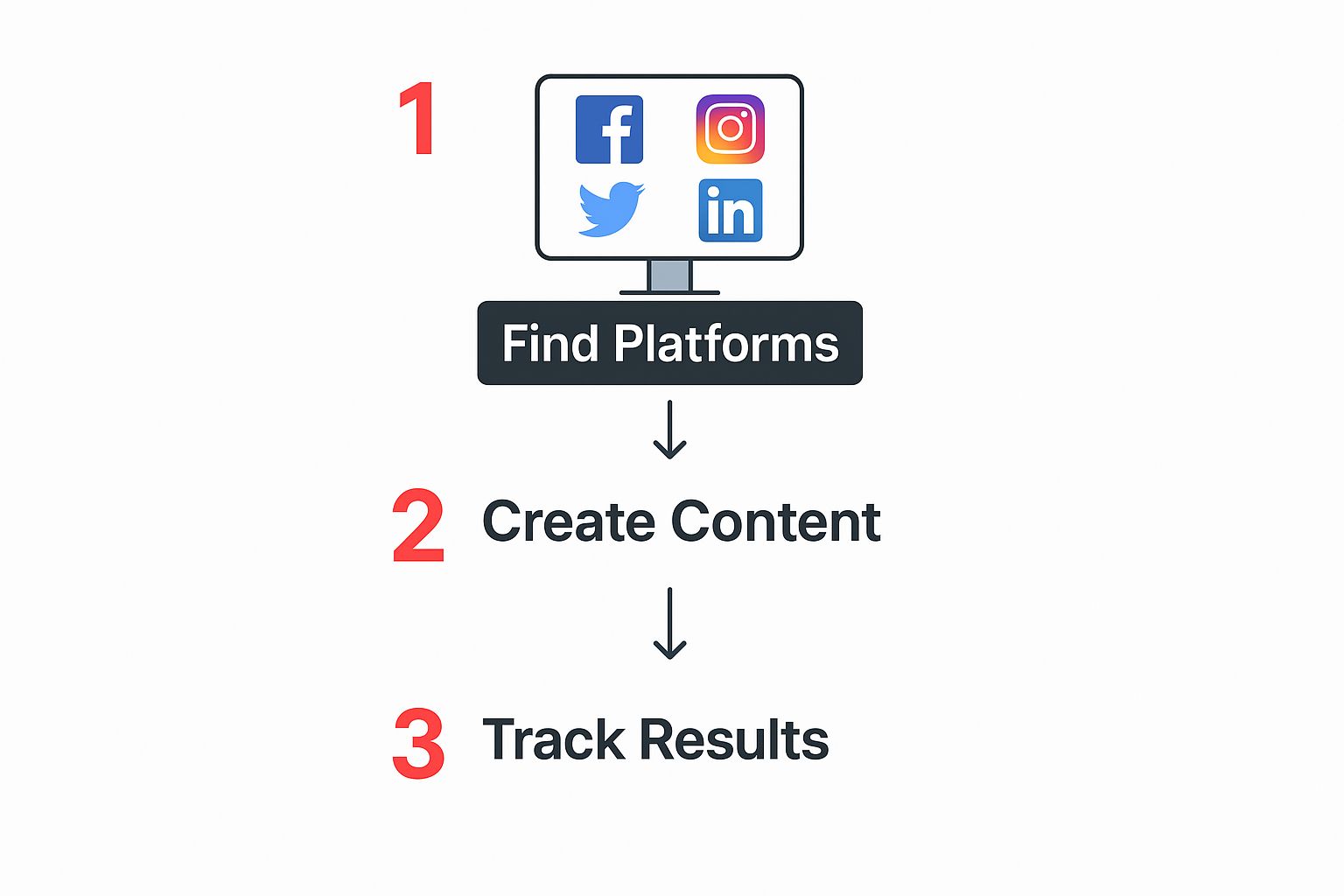
The first step is always knowing where your audience actually hangs out online. It sounds obvious, but you'd be surprised how many brands waste time searching on platforms where their ideal customers just aren't active.
Master Organic Discovery on Social Platforms
Honestly, your best first source for potential partners is probably right under your nose. Start by digging into who is already talking about and engaging with your brand. These people are gold because they already have a real affinity for what you do.
Look for micro-influencers who are:
- Already following you: Go through your followers list. You might be shocked to find someone with 15,000 followers who already loves your brand. That's a dream partnership waiting to happen.
- Tagging your brand: Keep a sharp eye on your tagged photos and mentions. Creators making user-generated content (UGC) with your products are basically giving you a free audition.
- Engaging with your competitors: It's also smart to see which micro-influencers are commenting on or even working with brands in your space. This tells you they’re active in your niche and definitely open to brand partnerships.
This organic approach often leads to the most authentic and powerful collaborations because the relationship starts from a place of genuine interest, not a cold pitch.
Harness the Power of Advanced Search
Once you've checked your own backyard, it’s time to search strategically on platforms like Instagram and TikTok. Don't just type in broad terms. You have to get specific and creative with your keywords and hashtags.
The most effective hashtag strategy goes way beyond generic tags like #microinfluencer. You need to focus on a mix of niche, community, and even location-based tags. This is how you find creators who are truly embedded in the communities you want to reach.
Let's say you're a sustainable coffee brand. Searching for #coffee is useless. A much better approach is to explore tags like #EthicalCoffee, #HomeBaristaLife, or a local tag like #AustinCoffeeScene. Find out who is creating the most compelling content under those specific tags—those are your hidden gems.
This same logic applies everywhere. On YouTube, search for review videos or "how-to" tutorials related to your product category. Over on TikTok, the Creator Marketplace has some seriously powerful filters that let you find partners based on their niche and specific audience data.
The influencer marketing industry is absolutely exploding, with projections to hit $24 billion this year. Brands are catching on to the power of smaller creators. In fact, 44% now work with nano-influencers and 26% with micro-influencers, which shows a clear trend toward more authentic, relatable partnerships. You can dive deeper into these influencer marketing trends to get a better feel for the market.
Streamline Discovery with Influencer Platforms
While digging around manually is great for finding authentic fans, it’s also incredibly time-consuming. This is where influencer marketing platforms like JoinBrands become a complete game-changer. Think of them as a search engine built specifically for creators.
Instead of scrolling for hours, you can apply super-specific filters to a huge database of creators and find exactly who you need, fast.
You can typically filter for things like:
- Follower count (e.g., 10k-50k)
- Engagement rate (e.g., above 3%)
- Audience demographics (age, location, gender)
- Specific keywords or niche categories
Using a platform dramatically cuts down the time you spend on discovery and vetting. This frees you up to focus on what really matters: building real relationships and crafting outreach that actually gets a response. Combining this kind of organic sleuthing with tech-powered searching is, hands down, the most effective way to find micro-influencers who will drive real results for your brand.
The Essential Vetting Process to Protect Your Brand
Finding a creator who looks good on the surface is just the start. The real work—and the part that truly protects your investment and brand—is in the vetting process. Trust me, I've seen it happen: a great-looking profile can easily hide a disengaged audience or a history of unprofessional partnerships.
Skipping this step is like buying a car without even looking under the hood. You've got to be a bit of a digital detective, digging much deeper than just follower counts and a polished profile pic.
A thorough vetting process ensures you partner with creators who have built a real, trusting community, not just an inflated number. This protects your budget and, more importantly, your brand's credibility.
Analyzing Audience Health and Authenticity
First things first: you have to check their audience's health. A huge following means absolutely nothing if it’s packed with bots or inactive accounts. Fake followers are a major red flag, offering zero value and pointing to a creator who might not be on the level.
Start by manually scrolling through their follower list. Do you see a ton of profiles with no posts, generic usernames full of numbers, or no profile pictures? These are classic signs of fake accounts.
Next, dive into the comments on their recent posts. Are they all just generic, one-word responses like "Nice!" or "Great post!"? Or are there genuine questions and conversations happening? A healthy community has active, thoughtful discussions. Low-quality, bot-like comments are a dead giveaway of poor engagement and a less-than-authentic following.
A creator's comment section is a window into the health of their community. Vague, repetitive comments are a warning sign. Genuine conversations and questions from followers are a green light, indicating a truly engaged and authentic audience.
Evaluating Content Quality and Brand Alignment
Once you've confirmed their audience is legit, it's time to shift your focus to their actual content. This is where you figure out if their creative style and values genuinely align with your brand. Being in the same niche is one thing, but their tone, aesthetic, and messaging have to feel like a natural extension of your own.
Here’s a practical checklist I use for this part of the evaluation:
- Past Sponsored Content: How do they handle partnerships? Hunt down their past sponsored posts. Do they feel forced and transactional, or are they integrated seamlessly into their feed? A great partner creates sponsored content that's just as valuable and engaging as their organic posts.
- Content Consistency: Is their content quality consistent, or is it all over the place? Look for a steady stream of high-quality images, well-edited videos, and thoughtful captions. This signals professionalism and a real commitment to their audience.
- Brand Value Alignment: Dig into their content archives. Do their posts reflect values that are compatible with your brand? If you’re a sustainable brand, partnering with an influencer who constantly promotes fast fashion will create a jarring disconnect for both of your audiences.
This deep dive into their content history is non-negotiable. It’s what helps you find micro-influencers who will not only promote your product but actually enhance your brand’s story in an authentic way. Platforms like JoinBrands can make this much easier by providing creator portfolios and past work examples, giving you a clearer picture before you even reach out.
Crafting Outreach That Actually Gets a Response

Alright, you've done the legwork and have a solid list of vetted micro-influencers. Now comes the moment of truth: reaching out. This is honestly where most brands drop the ball. Creators are drowning in generic, copy-paste messages that basically scream, "I have no idea who you are."
If you want to stand out, your outreach needs to feel human. Think of it less as a pitch and more as the start of a real relationship. A thoughtful, well-researched message shows you've done your homework and you see them as a partner, not just another name on a spreadsheet.
The Anatomy of a Perfect First Message
Forget about rigid templates. A great first contact, whether it's an email or a DM, feels personal. It should be quick, clear, and prove that you actually appreciate their content. The best outreach messages show you’re a real person who’s been paying attention.
Start by mentioning a specific piece of their content you genuinely liked. Don't just say, "I love your feed." Instead, try something like, "Your recent video on at-home cold brew techniques was a game-changer—I immediately tried the flash-chilling tip!" This tiny detail proves you aren't just spamming a list.
Be Clear About the Why and the What
Right after your personalized opener, get straight to the point. Clearly explain why you think they're a perfect fit for your brand. Connect their unique style, audience, or content themes directly to your product. This shows you've thought strategically about the partnership.
Then, lay out your offer. This isn't the time to be mysterious about compensation. Be upfront about whether you're offering payment, free product, or a mix of both. Honesty builds trust from day one.
Your initial outreach is your first impression. Make it count by showing you value the creator's time and talent. A message that is personalized, direct, and transparent is far more likely to get a positive response than a generic, templated pitch.
Here’s a quick rundown of what a compelling offer should include:
- A Clear "Ask": Detail exactly what you have in mind (e.g., one Instagram Reel and three Stories).
- The Compensation: State your proposed payment or the value of the product you’re offering.
- Creative Freedom: Reassure them that you want their authentic voice to shine through.
- A Simple Next Step: End with an easy, low-commitment question like, "Would you be open to hearing more?"
This approach respects their time and professionalism. Modern tools can even help with this. In fact, 66.4% of marketers are seeing better campaign results by using technology for smarter creator discovery and partnership strategies. You can learn more about how tech is changing the game in this influencer marketing benchmark report.
By investing just a few extra minutes to personalize your outreach, you dramatically boost your chances of not just getting a reply, but starting a strong, long-term partnership with the right micro-influencers for your brand.
Common Questions About Finding Micro-Influencers
Even with the best strategy in hand, you're bound to run into a few questions when you start the hunt for the right micro-influencers. It’s just part of the process. Let's tackle some of the most common hurdles I see brands face, so you can keep your momentum going.
How Much Should I Pay a Micro-Influencer?
Ah, the million-dollar question. Luckily, the answer is usually much, much less. The truth is, compensation can be all over the map. It really depends on their follower count, how engaged their audience is, your industry, and exactly what you’re asking them to create.
A pretty common starting point is the "1 cent per follower" rule of thumb. So, for a creator with 15,000 followers, you might see a starting rate around $150 for a single post. But think of this as just a baseline. Seasoned creators who have built a really active and trusting audience often charge a premium, and you should be ready to negotiate.
While some up-and-coming creators might be open to a product-only exchange, cash is king for most established micro-influencers. And rightfully so. You're not just paying for a post; you're investing in their creative skills, production time, and the direct line they have to a community that trusts them.
What Is the Best Platform to Find Them?
The "best" platform has nothing to do with what's trendy and everything to do with where your customers actually hang out online. Simple as that. You have to fish where the fish are.
For most e-commerce and direct-to-consumer (DTC) brands, the conversation almost always starts with Instagram and TikTok. Their visual-first nature and powerful search tools make them a goldmine for finding creators in popular niches like fashion, beauty, home goods, and fitness.
But don't get tunnel vision. If you're a B2B company, for instance, a creator with a strong voice on LinkedIn or a respected industry blog could be far more valuable. It all comes back to matching the platform to your audience's behavior.
The most important metric isn't follower count—it's audience alignment. A partnership will only succeed if the creator's followers match your ideal customer profile. Prioritize engagement rate and audience demographics over vanity metrics every single time.
How Many Micro-Influencers Should I Work With?
When you’re just starting out, it’s easy to get ambitious and want to partner with dozens of creators at once. My advice? Start small and be deliberate. For your very first campaign, I’d suggest aiming for a focused group of 3-5 micro-influencers.
Keeping the initial number manageable is a game-changer. It allows you to:
- Test your messaging and see how your creative brief lands in the real world.
- Build real, personal relationships instead of just managing a spreadsheet.
- Gather clean performance data to figure out what's actually working.
This approach is all about quality over quantity. Once you've ironed out the kinks in your process and know what kind of content drives results, you can scale up your program with confidence and build a powerful community of advocates.
Ready to stop searching and start connecting with vetted creators? JoinBrands is an all-in-one platform that makes finding the perfect micro-influencers, TikTok Shop Affiliates, and UGC creators effortless. Streamline your entire workflow—from discovery and outreach to content approval and payment—all in one place. Find your perfect creator match on JoinBrands today!
